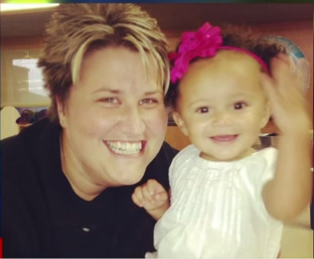Sperm Bank's Mistake Prompts White Couple's Lawsuit Over Biracial Child: A Call For Electronic Records

Two years ago, an Ohio sperm bank accidentally sent a white couple sperm from a black donor, which resulted in the birth of a beautiful yet obviously biracial baby girl. The couple says that raising a black girl in a 98 percent white town is likely to be an emotional challenge for both the child and her family, and are now suing the sperm bank. Although the purpose of the lawsuit is to to get the bank to be held responsible for its error, the story highlights an even larger issue: the importance of electronic record-keeping.
Jennifer Cramblett, 36, of rural Uniontown, Ohio, thoroughly researched prospective sperm donors before selecting one that she felt most closely matched the physical appearance of both her and her partner. The white couple selected sperm number 380, a donation from a white male with blonde hair and blue eyes, Reuters reported. Five months into her pregnancy, Cramblett called the sperm bank to order more vials, and perhaps give her unborn child genetically similar siblings.
It was here that the large mix-up was revealed. “I asked for 380 and they came back on the line and said ‘I do believe we sent you donor number 330. Are you sure that’s not what you asked for?” Cramblett told CNN in a vdeo interview. It was then that she went on to realize the full depth of the clerical error. “They said, 'Well, unfortunately, I think we errored up and sent you 330,” before adding, “'I do believe 330 is an African-American donor.'" Cramblett was told that a worker mistakenly read the handwritten 330 as 380.
Cramblett and her partner are currently suing the sperm bank, not because they are unhappy with their child’s race or physical appearence, but rather because of the company’s lack of empathy. “A few weeks later, I received a very small letter saying, ‘We’re sorry for the mix-up. Here’s your refund,” Cramblett explained. “I was more mad at the sperm bank for just being negligent. No sorry, no accountability. … I could not sit back and let this happen to anyone ever again.”
Cramblett and her partner are by far not the first couple to have fallen victim of clerical errors by a sperm bank or reproductive health clinic. A white family in Northern Ireland sued a sperm bank for a similar mistake after unknowingly conceiving mixed race children. In Italy, a fertility clinic went as far as to implant the wrong embryos into a woman, which resulted in her giving birth to another couple’s twins. Many of these mishaps seem to have the same problem: human error due to inadequate record-keeping.
Perhaps Cramblett’s case can bring wider recognition of not only the benefits of electronic health records, but the repercussions of non-digital technology. “As a solicitor, the incidents that I continue to see appear to flow from the same old problems of inadequate systems compounded by human error. These types of mistakes cause unimaginable heartache and anguish to couples longing for a baby,” Guy Forster, a lawyer who specializes in negligence cases involving IVF, told the Daily Mail.
Published by Medicaldaily.com



























